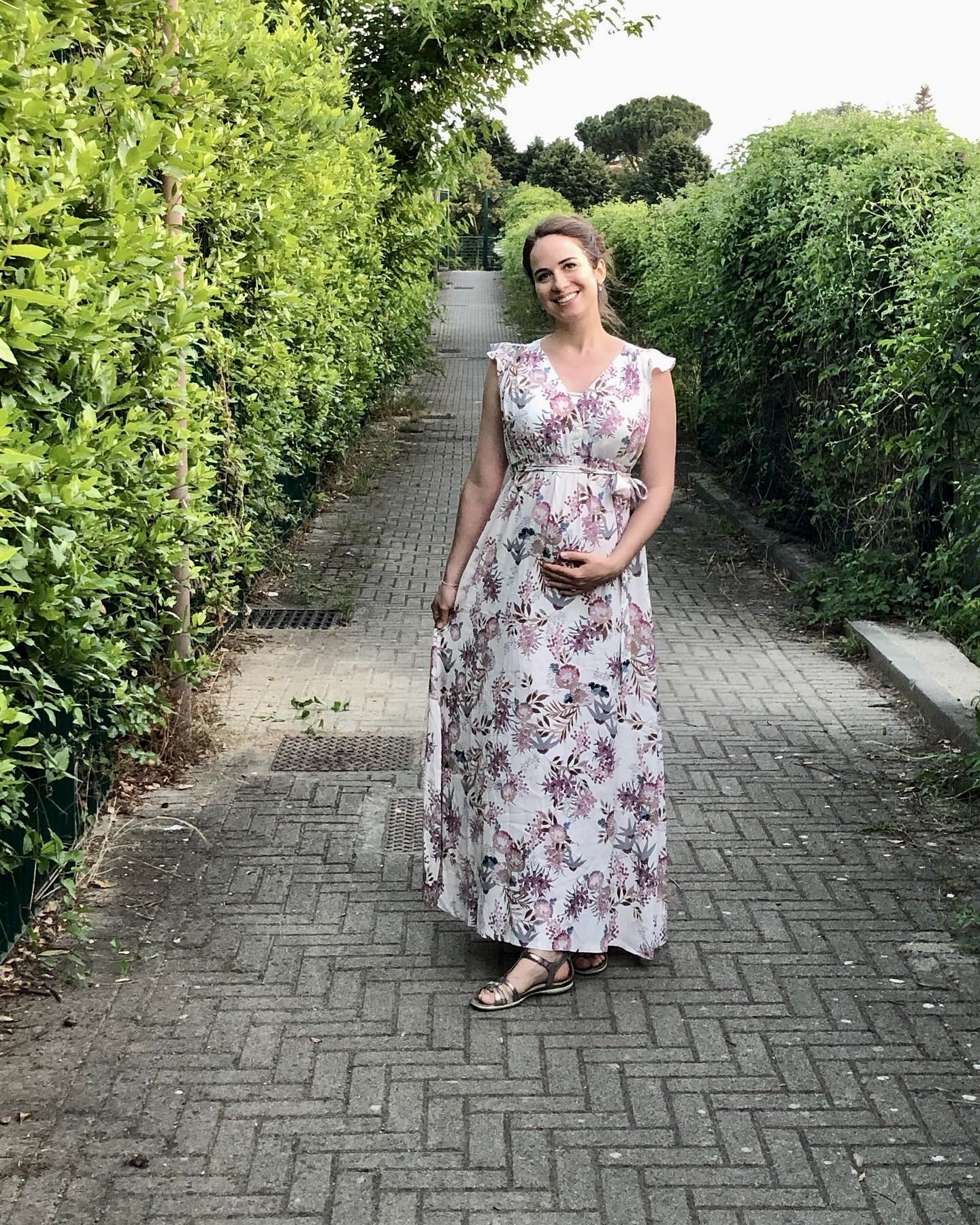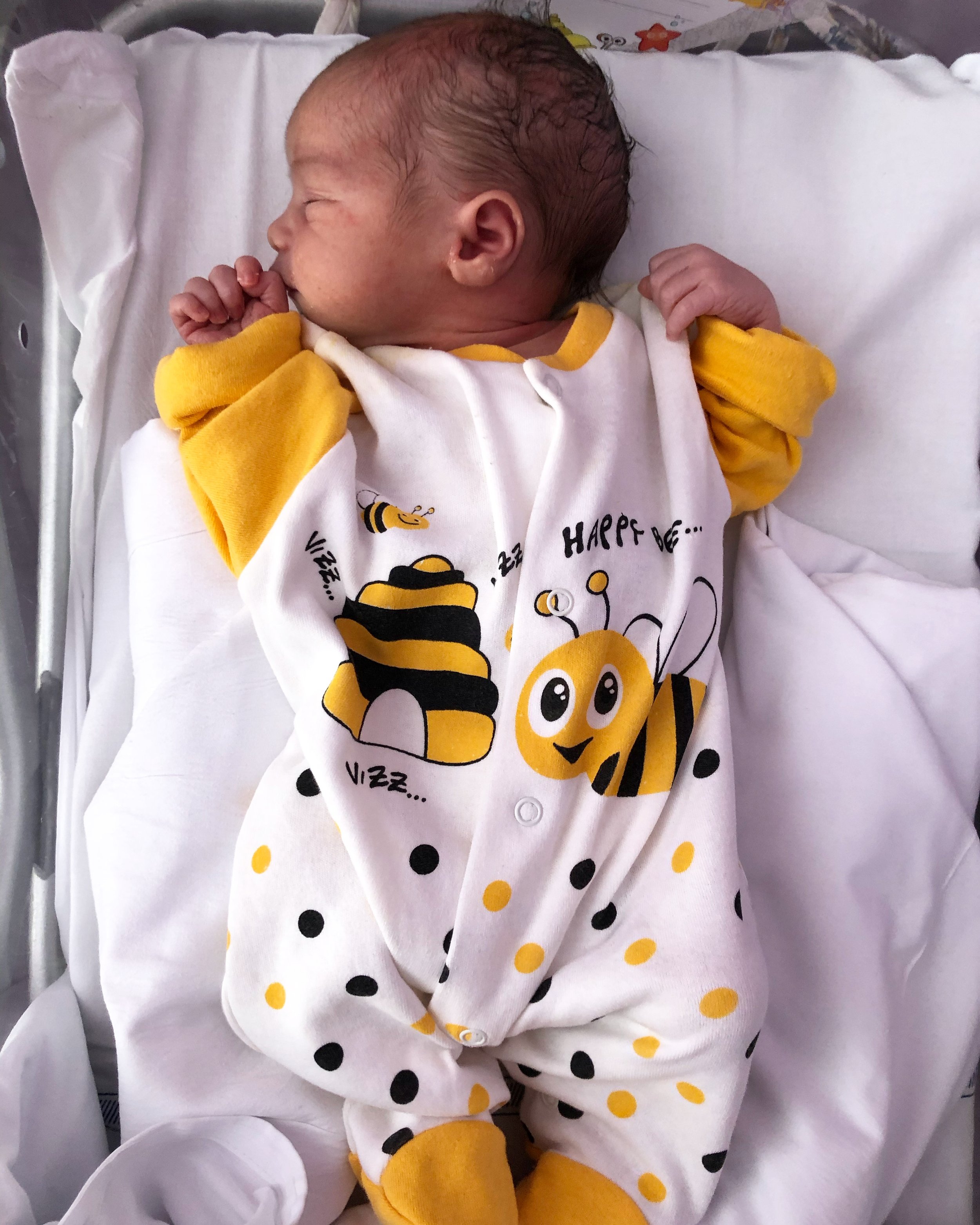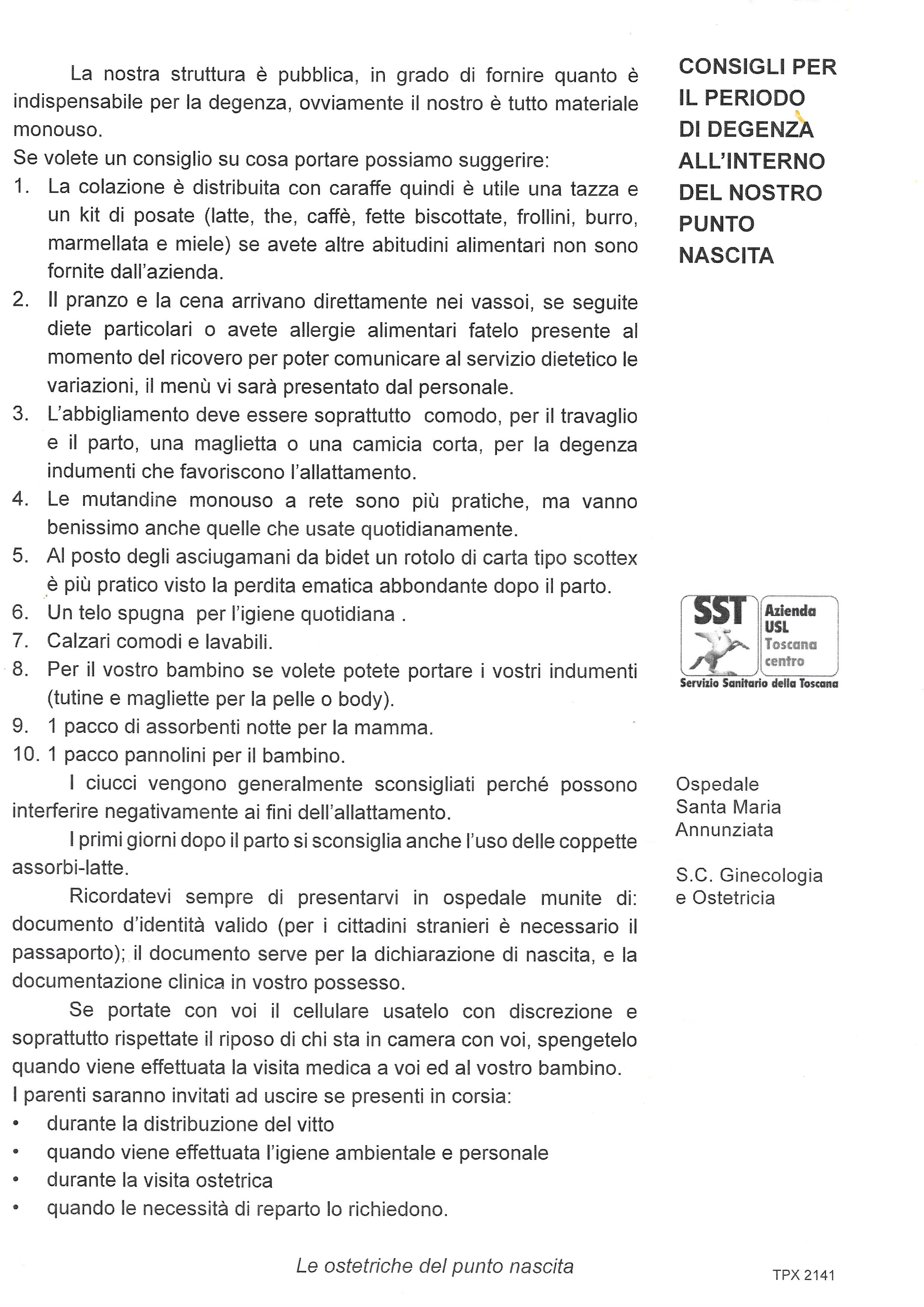Italian Hospital Bag Checklist: What Not to Pack
/You have birth support people picked out. You have your birth plan typed up. Your hospital bag has been packed since your 28th week. Your freezer is full to capacity with frozen dinners (and cookies). You’ve been doing your Spinning Babies exercises. You’ve asked your mom/friends a hundred questions just in the last week, and Google a couple hundred more. You’ve read every birth story you can get your hands on. You’re so ready.
The beautiful thing about birth is that you never know what will happen. Each woman, birth, and baby is different. If you’re a first time mom like me, you can do everything in the world to prepare, but nothing will truly prepare you for the experience until you actually experience it. And that’s ok. With all the unpredictability, though, it is nice to at least be ready in other aspects where you can.
If you live in Italy, it’s even more unpredictable. If you’re not an Italian native, you get to add on another layer of unpredictability. If you’re pregnant and giving birth during a pandemic, go ahead and add another layer. Now you have this layered onion of unpredictability; the more you cut into it, the more you might want to cry.
I know, I know, Google doesn’t need another hospital bag checklist. If you’ve been pregnant since the invention of Google, blogs, and Pinterest, you know what I’m talking about. If you took everyone’s advice on what to pack you’d look like you’re moving into the hospital for good. I’m glad everyone nailed their hospital bag and are now suddenly experts on all things birth and babies. If it makes you feel any better, my hospital bag kinda stunk. As you’ll see below, there’s the official recommendation from the hospital, then in italics what I brought/what I would do differently next time. Half the reason my bag was not Mary Poppins’ bag was because of conflicting information from the hospital. Half the stuff they recommended I bring they ended up providing. Other items they discouraged I wished I might’ve had with me.
This is where this post comes in. I shall be happy if I can help one person be better prepared for their hospital stay in Italy. In Florence. At Ponte a Niccheri (Ospedale Santa Maria Annunziata). Before the rules change. Ok, well, at the very least you can empathize and/or laugh at my expense.
The links in this post are not affiliate links, no revenue is earned if you click on them, simply things I used and enjoyed. :)
Italian Hospital Bag Checklist: What Not to Pack
The actual hospital checklist
At my first visit to the hospital at 39+1 weeks, I was given a checklist. A bit late in the game to be receiving it, but better late than never. It was enlightening, as Italian hospitals operate differently than American hospitals and expect you to bring more.
What follows are the hospital’s suggestions on what to bring. (Translation and sometimes paraphrasing by yours truly, oh joy.) See photo for the original list.
Our structure is public, able to provide whatever is indispensable for the hospital stay, obviously ours are all disposable items.
If you’d like a recommendation on what to bring we can suggest:
Breakfast is distributed in a carafe, so a mug and silverware are useful. (Breakfast is milk, tea, coffee, toast, cookies, butter, jam, and honey.) If you have other food habits, they’re not provided by the hospital.
I had heard stories from other moms about having to bring their own dishes to the hospital, so was expecting this. Ironically I didn’t bring any because labor came on faster than I thought and we accidentally left several things at home.
The infamous fette biscottate I roughly translated above as “toast” because they’re store-bought, very small pieces of dry bread. Think crouton texture. I had heard about women having just given birth, after many hours at the hospital, to be given as their first meal…fette biscottate. And a cup of tea. 60 calories of refined carbs will get you back your energy real quick after the hardest work of your life. Hahaha. However, I was not served the fette biscottate, but instead a little package of cookies, akin to graham crackers in taste. I even got TWO packages for breakfast. And because I didn’t have a mug, they gave me a tiny plastic cup of caffè latte or tea.
Also, I would bring your own water and whatever beverages you desire. In my 76 hour stay at the hospital I was never once given nor offered water. When I was escorted to my room at 1am after the birth, I asked for water. All I had was a swig of an electrolyte drink my husband had gotten me during labor, but I hadn’t been much able to drink. That water never arrived so I spent the rest of the night rationing those few ounces. It was so hot, too. I asked again the next morning, and still didn’t get any (Throat…parched…so dry…have pity…pant pant). The coffee tasted wonderful (although I’m pretty sure it was some kind of powder mix) just because I was so thirsty. For lunch visiting hours when my husband was able to come back he brought me a pack of water and drinks. So consider bringing your own!
Lunch and dinner come directly on trays, if you follow particular diets or have food allergies let the staff know so they can present to you a different menu.
I don’t have any food allergies, but a nurse would come in twice a day and rattle off the menu. There was a surprising amount of choices I thought, and each meal consisted of several different items. It’s hospital food, though, not delicious. But hey, after birth and being generally ravenous after not wanting to eat for 24+ hours, I almost enjoyed it.
Each meal usually consisted of a choice of protein, choice of bland boiled vegetable, possibly a soup, a dry piece of bread, a mealy apple and some possibly worm-infested plums, with a small cheese chunk and some grated cheese and a little packet of olive oil since these were the “hyper-caloric with supplement” meals for the moms.
Clothing needs to be above all comfortable, for labor and birth a shirt or short nightgown, for the recovery garments that favor breastfeeding.
The hospital video had recommended 2-3 nightgowns, button up and short sleeve so they can poke you with needles and stuff. I ended up bringing 3 nightgowns and a stretchy comfortable maternity dress for going home. I should’ve brought more, as the nightgown I wore during labor/birth I tossed. (It was old and stretched out, there’s a reason I chose that one.) Which basically left me with one gown per day in hospital. I’m sure that would’ve been fine normally but when your milk comes in and baby spits up…let’s just say I was wet and stained all the time. Bring options if you can!
It was very hot in the rooms. Even though my clothes were very light I suffered a bit. I would wager it was about 85°F/30°C. Being mid September the weather could’ve gone either way, but leading up to then it was still quite hot. Never touched my fuzzy blanket. With the way Italians use air conditioning I figured it would be warm, I just didn’t expect it to feel like they had the heat cranked.
Disposable underwear are the most practical, but what you use daily is also fine.
This is where information I received started conflicting. At first I heard to bring the Depends type disposable adult underwear, not pads. I originally didn’t want to because when you break it down, it was about €1 per disposable pair. I had decided to get some pads since they were cheaper, then once things slowed down switch to my trusty ModiBodi period undies. I didn’t want to be chided at the hospital for not bringing what they recommended, so I ended up buying one pack of the Tena disposable undies when I found a good sale. Yes, they were very nice, secure, and comfy. Not too cumbersome either. I recommend them. But are they necessary? No. Postpartum pads and nighttime pads were fine, too.
All that deliberating on my end of what to buy/bring, and the hospital provided pads. Sure, they were roughly the size of a small magic carpet and without any adhesive to keep them in place, but that would’ve saved me time, money, and room in my hospital bag if they had just said they provide them.
Instead of a bidet towel a roll of toilet paper is more practical given the abundant blood loss after birth.
Spoiler alert: despite having heard from others that hospitals don’t have toilet paper, this one did. That roll of toilet paper in my bag? Didn’t need it. (Maybe I should’ve TPed them? Lol)
I wondered if the hospitals might have bidets, as that might render the classic postpartum peri bottle redundant. I had looked and looked, but could only find these much fancier “portable bidet” bottles on Amazon for €15ish. Why can’t I get a peri bottle for a few dollars like in the States? Feeling quite proud of myself, I got around the problem by buying a food condiment bottle for €2, basically the same thing as a peri bottle and cheaper! But. The hospitals did have bidets and the midwives were probably quite amused by this American carrying around her salad dressing bottle.
A towel and washcloth for everyday hygiene.
I packed soap, a washcloth, and towel, but no shampoo. I figured I would have my hair freshly washed before going to the hospital and could survive just fine washing my hair after at home. In real life, labor came on quickly and none of that “try and sleep, shower, do daily life until you can’t anymore” stuff happened. And when labor came on, my hair was dirty. No washing it now! Because of this, I had my husband bring me a bottle of shampoo. In the end I didn’t get to use that either, being alone in the hospital, who was going to watch my newborn while I showered? (No bathrooms in the shared rooms, you had to go down the hall, and there was only one shower.)
Comfortable and washable socks/slippers.
Yes to comfy socks. I brought an old cruddy pair to wear for labor and throw away after I was done. For the rest of the time I brought a pair of flip flops; that was a good choice since the maternity ward was so hot.
When I first arrived at the hospital I was shown my room and locker for my stuff next to the bed. I changed into my nightgown and socks and the midwife who was waiting to escort us to my labor room immediately started chiding me that wearing socks in a hospital was “unsanitary.” Sorry, but I’m not wearing shoes while I’m laboring! And why do they list socks if they’re going to give me a hard time about it?
For your baby if you want you can bring your garments (pajamas and clothes or onesies).
If I want? Is my baby going to go home naked? Hahaha.
The hospital video mentioned bringing 2-3 outfits and 2-3 onesies for baby. Similar to clothes for me as mentioned above, I would bring more for a 3 day stay, for similar reasons. There’s milk, spit up, and that wonderful meconium.
You might also consider bringing a few size options, just in case your baby is born bigger or smaller than you expect. Coming from a family of big babies, I had no reason to expect my son to come out not even 7 lbs/3.1kg. Poor little guy, all his clothes were huge on him for the first month of his life.
1 pack of nighttime pads for mamma.
See #4. Might make more sense to put these next to each other on the list? What do you think, would they let me rewrite their list for them?
1 pack of diapers for the baby.
The video that was so hard to understand from the hospital we thought had said no diapers, but now we need to bring them? Ok.
Then we show up to the hospital and they provided diapers. That now makes half of my hospital bag redundant.
Pacifiers are generally discouraged because they can interfere negatively with breastfeeding.
The day we left the hospital the pediatrician recommended we wait until baby is at least four weeks old before introducing a pacifier, so as to establish a good breastfeeding relationship first.
This was fine by us since we had more or less decided not to introduce pacifiers unless we felt a desperate need. That desperation beset us by two weeks in, but at that point baby boy clearly had NO confusion that the pacifier wasn’t his mama and wanted none of it.
For the first days after birth the use of nursing pads are also discouraged.
I’m actually not sure why they say this, I haven’t heard this anywhere else. If you know, please let me know in the comments or drop me a message, I’m curious to know!
For me, they would have been very useful in the hospital, I was so very leaky. Might’ve looked a little less “Singing in the Rain” and a little more Audrey Hepburn.
Ideas of what TO pack
Here are some more ideas I heard from people I trust. While I packed some of these myself, I didn’t touch a thing in my bag during labor or birth. I thought it out so carefully, what I thought I might like and be like during birth. Nope. It was labor and that was it. No trinkets. I would have so loved having my mom or doula there, experienced women who know childbirth and could have proactively helped me and anticipated my needs. My husband was lovely, but he was as new to the experience as I was. The midwife was in and out, and didn’t offer a whole lot.
Hot water bottle
I didn’t pack this, but this is one of the few things the midwife offered and it provided some relief from back labor, at least somewhat for an hour or two.
Tennis balls tied in a sock
For massaging. Sounded nice in theory, used to use those a lot after ballet class.
Essential oils
It’s better to bring some cotton balls or smell the oils straight from the bottles than apply topically. Some women have very strong smell aversions, and what you love one minute during labor you might not be able to stand shortly after. It’s much easier to close a bottle or toss a cotton ball than it is to wash an oil off your body. I had with me lavender, lime, and clary sage, simply because I thought those might be nice during labor.
Music
It’s funny that I didn’t think about it at the time, but my room was completely silent. Looking back I think music would’ve been nice, and in a way also helps you mark the passage of time. I had picked out what music I wanted to listen to on Spotify beforehand, but never thought about it in the moment.
Homey items
Anything that reminds you of home and might make your birth area more comfortable.
Washcloths
These can be multi-purpose, use with cold water during transition or pushing while you might be hot, sweaty, and possibly nauseated. Or wet with hot water to provide comfort to muscles and other body parts.
A concentration token
A meaningful object to focus on. I chose a necklace in the shape of my home state, Michigan…that stayed around my neck and I forgot was there until after baby was born. Hahaha.
Flameless candles
I didn’t bring these, but I thought they were a lovely idea for ambiance. A hospital isn’t going to let you burn down the building, but flameless or some kind of twinkle light would be neat!
All these are lovely, some I had in my bag. None I used. Their existence was completely forgotten during those long hours. Oh well, maybe next time!






















